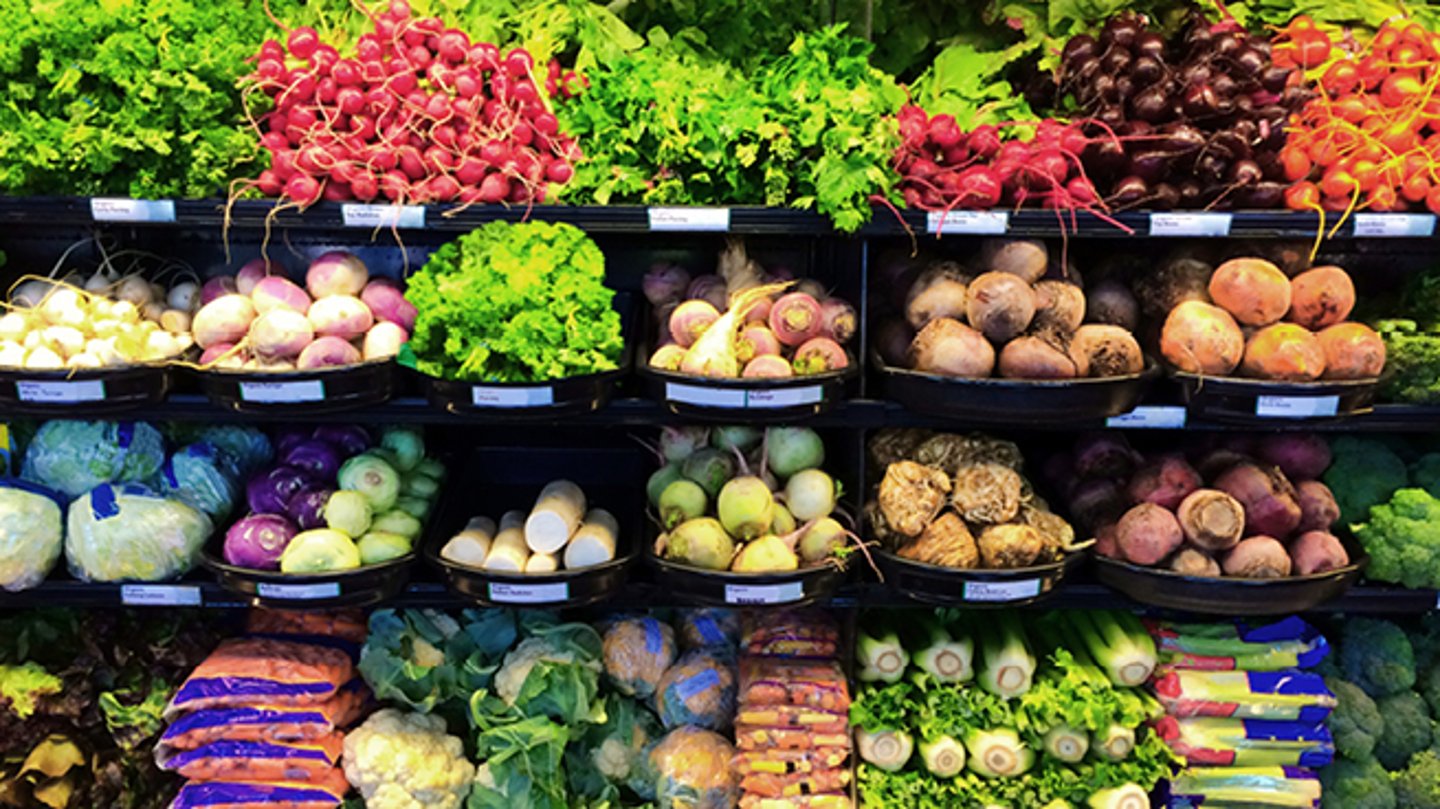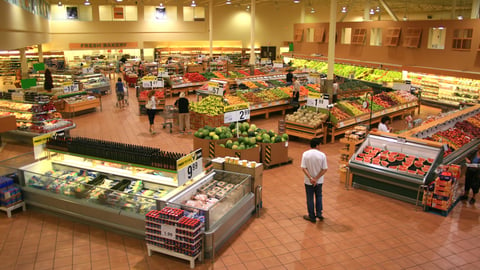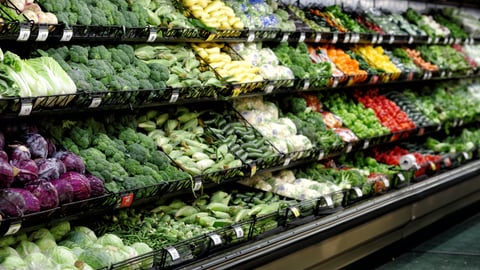Five ways grocers can win over produce shoppers amid inflation
As food prices go up, it’s bananas to think consumers aren’t feeling the pinch in the produce department. In fact, 78% of Ontarians noticed prices going up for fresh vegetables and 75% noticed this for fresh fruits, with 55% saying the hikes are concerning, according to a recent study by Numerator.
In many cases, price hikes are leading to changing buying habits as inflation-weary shoppers seek ways to stay on budget. In the study, 46% of consumers said they’re buying more fresh fruits and vegetables only when they’re on sale, 32% are cutting back on fresh produce, and 30% have switched to less expensive types. In addition, 30% said they’re buying more frozen fruits and vegetables, 27% are buying less produce overall, and 13% are buying more canned fruits and vegetables.
Purchase drivers have also shifted, and shoppers no longer feel that appearance is everything when it comes to buying fruit and veggies. In the 2022 Power of Produce report by FMI – The Food Industry Association, 25% of U.S. shoppers ranked price as the No. 1 factor when making fresh produce purchasing decisions, followed by appearance (19%) and ripeness (15%). This marked the first time price came out on top in the annual study’s eight-year history.
“Clearly this inflationary time is changing consumers’ attitudes towards how they buy the produce they’re looking for,” says Rick Stein, FMI’s vice-president of fresh foods. “They are being hit with a lot of economic pressures, including rising food and housing costs. So, they have to be discerning. But it’s important to note it’s a complex situation.”
By that he means volume sales may be down in some categories, but the industry is coming off two years of very strong growth. In addition, Stein says it’s difficult to make blanket statements about consumers’ shopping behaviours. “Consumers behave very differently depending on their socioeconomic backgrounds and what’s important to them.”
It’s a tough road to navigate for grocers, who are dealing with rising prices and shifting buying habits across departments, which is why it’s vital to take a fresh approach to encourage sales and consumption of fresh fruits and veggies. Here’s five ways to do just that.
Go (even more) local
Consumers and retailers alike have been living the “go local” mantra for years, but enthusiasm is stronger than ever. When FMI asked consumers what they’d like to see their produce department carry more of, “locally grown” was the top choice across generations: gen Z (47%), millennials (47%), gen X (56%) and baby boomers (67%).
“Local is a big deal for consumers, and if I were a retailer, I would play up my local offering and showcase the benefits of purchasing local,” says Stein. “It’s not enough to say it’s local, but you can narrate the stories of the farms and the people behind them. This can create mission-driven purchases for consumers who want to support [these farmers].”
That’s the approach Vancouver Island’s Country Grocer takes across its seven locations. Every week, the flyer highlights a B.C. grower and directs consumers to find their fresh produce at their local Country Grocer. “We look after our growers and make sure they get paid properly,” says Rob Johnson, produce operations manager at Country Grocer. “If we don’t support them in our advertising and merchandising and make sure our customers know we’re buying produce from these [growers], 10 years from now we’re not going to have any [local] produce.”
With a sharp focus on local, along with clean, well-merchandised produce departments, Johnson says sales remain strong. “[Our customers] don’t question pricing and they haven’t stopped buying because they still see the value of having fresh produce.”
Help shoppers save money and reduce food waste
To help consumers navigate rising food prices, grocers and industry groups alike can help them shop, store and eat fruits and veggies more wisely. For example, the Canadian Produce Marketing Association (CPMA) developed resources such as a shelf-life guide to help consumers reduce food waste (and wasted money) by storing fruits and vegetables properly.
“What we are trying to get people to focus on is not cutting back, but making sure they’re shopping [and consuming] wisely to eliminate food waste,” says Sue Lewis, vice-president of market development at CPMA. “That might mean an extra trip to the grocery store so they’re not buying so much at once, and teaching people to eat berries first and keep the apples for later.”
CPMA is also encouraging consumers to shop store flyers for specials and plan before they shop, so they’re only buying what they need. “Canadians are getting into the habit of consulting flyers – whether they’re digital or physical – before they go to the grocery store, which can help save a lot of money,” says Lewis. “From a retailer’s point of view, it’s important to make those items easy to find in the store. If it’s in the flyer, it should have good signage and be pretty close to the front of the store.”
With food prices rising, grocery retailers can help customers get more bang for their buck. “Consumers’ income has not increased at the same pace as inflation, so the same amount of money they had available for groceries last year does not buy the same amount this year,” says Lawrence Wright, produce operations director at Calgary Co-op. “The dollar has to stretch further so there is a slight shift towards lower retail products and sale items to fill the basket. But we’re working with our supplier partners to get the best produce at the lowest costs available and pass along the savings to consumers.”
Get recipe ideas – and quantities – right
For Ryan Harris, principal at IRI Canada, the produce department is ripe for innovation, given today’s generational differences. “The idea that shoppers are writing their ingredient list on a piece of paper or Post-it note, walking around the store and trying to grab things is antiquated thinking,” says Harris. “A 25-year-old has a smartphone and an app with a recipe and shopping list. When they walk into a store, they want to find exactly what they need and purchase the items in the exact quantities.”
One idea for retailers is to showcase a “recipe of the week” and have the exact ingredients and quantities available and on display. “Retailers should align recipes they’re promoting to customers with the fresh experience,” says Harris. “So, if the recipe calls for a cup of broccoli florets, shoppers can buy in those quantities.”
More broadly speaking, Harris says it’s about understanding exactly how consumers shop the category to make it as easy as possible for them to get what they’re looking for. “The produce department is long overdue for an evolution and retailers need to figure out what consumers are really looking for and how they shop the category,” he says.
Satisfy the craving for convenience
While price is top of mind, FMI’s Stein says convenience is still very important for consumers. The Power of Produce study, for example, found that 45% of shoppers frequently purchase convenient vegetable solutions and 48% purchase convenient fruit solutions, such as pre-cut and grab-and-go options. Still, Stein notes convenience can mean many things to consumers. “We used to say convenience is pre-cut fruit and vegetables,” says Stein. “But convenience can also be giving consumers recipe ideas.”
Another convenience play is to give consumers ideas on how to bring produce into more meal occasions. “Grocers can remind consumers that produce can play a role in their breakfast, snacking, lunch, dinner and even dessert for that matter,” says Stein. “When you give them ideas, you’re making their lives a bit more convenient.”
Promote the health benefits of fresh produce
The best thing going for the produce department is obvious: health. In The Power of Produce report, the vast majority of shoppers (96%) consider buying from the produce department an investment in personal health and well-being. The report notes consumers increasingly associate fresh produce with digestive health, weight management as well as disease management. “In fact, one third of consumers who pay a lot of attention to health tend to see fresh produce as playing a central role in their diet, and six in 10 shoppers purchase fruits and vegetables to deliver on specific health benefits,” the report states. “This positive association has spurred higher demand for more information about nutrition, health benefits, recommended daily amounts, and other health-centric insights.”
“Play to the strengths of the category and the primary one is: it’s healthy and nutritious,” says Stein. “Grocery retailers can integrate dietary guidelines for fruits and vegetables into their marketing and merchandising, speaking to what the average consumer should be eating daily.” They can also play into the strengths by providing information on the health benefits of specific fruits and vegetables.
For Calgary Co-op, health is the very thing that will keep the produce department, well, healthy. “Consumers want to eat healthier in their day-to-day lives and are increasingly understanding the value and health benefits of fresh produce,” says Wright. “This creates a desire to purchase more produce whenever possible.”
CPMA’s Lewis predicts the health and mindful eating trend is here to stay. “If anything, it’s probably getting stronger,” she says. “A lot of our data suggests millennials are very conscious of their eating choices and they are choosing less meat. So that also bodes well for the category.”
This article was first featured in Canadian Grocer’s September/October issue.



